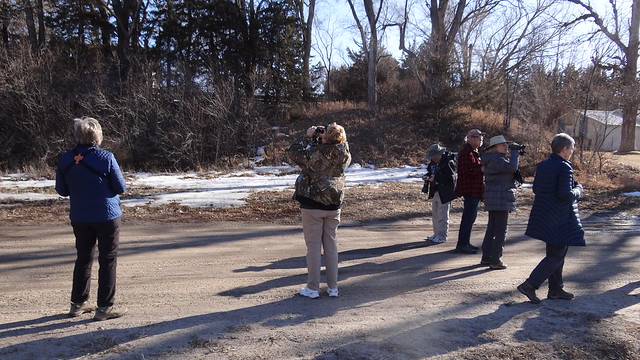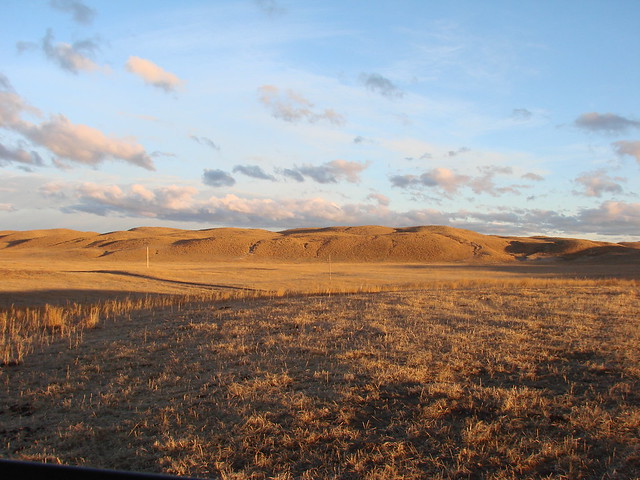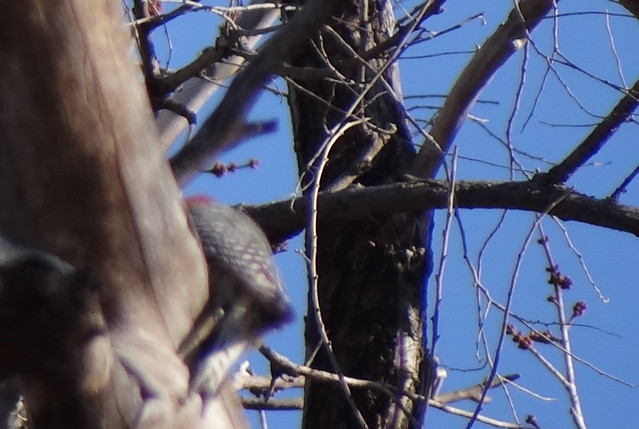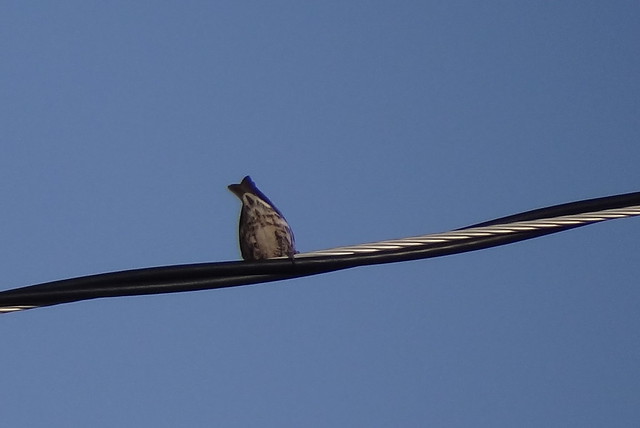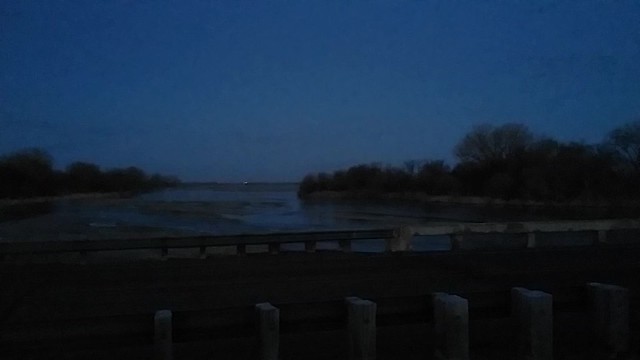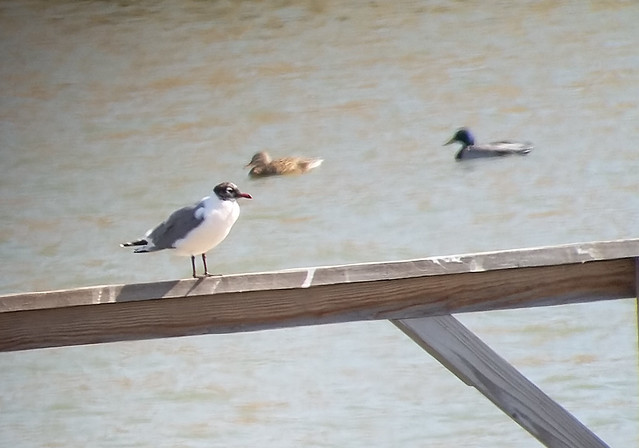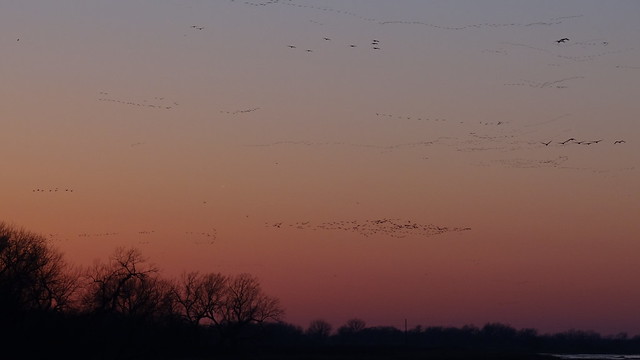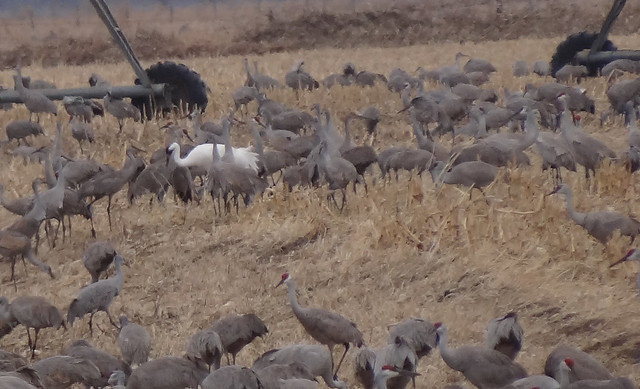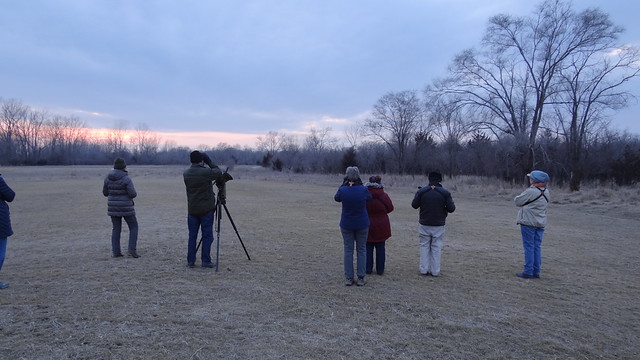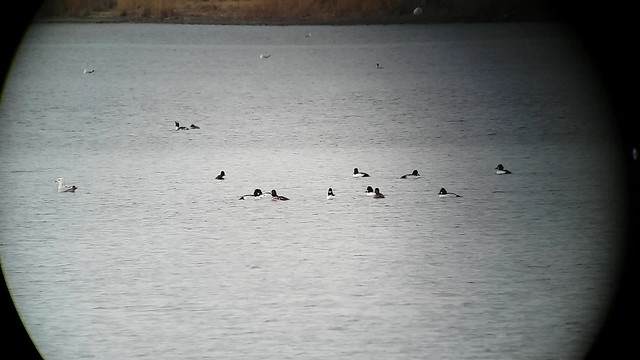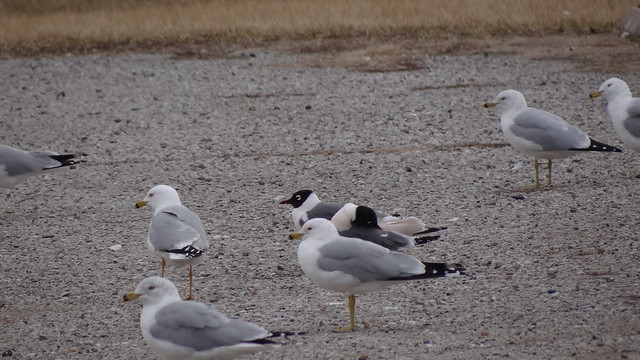Daylight saving time and Mullen’s position right on the eastern border of the Mountain Time Zone came together to let us sleep in — kind of. We were in the shuttle at 5:30 this morning and on our way to the lek of the sharp-tailed grouse, about 25 minutes east of Mullen (and back, I think, in Central Time).
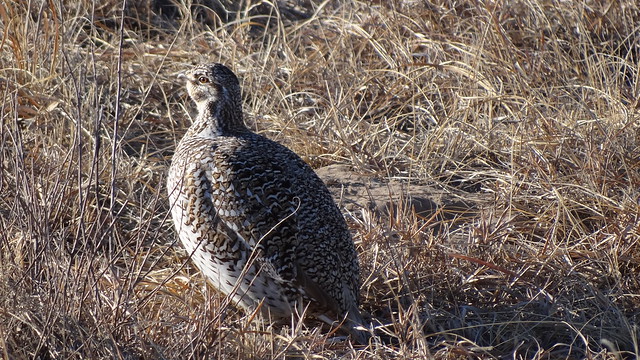 It wasn’t long before the eastern sky brightened and we heard the first low hoots and cackles of the grouse. As the light rose, we saw eleven males dancing on the lek, stamping their furred feet and rattling their tail quills as the faced off in the grass.
It wasn’t long before the eastern sky brightened and we heard the first low hoots and cackles of the grouse. As the light rose, we saw eleven males dancing on the lek, stamping their furred feet and rattling their tail quills as the faced off in the grass.
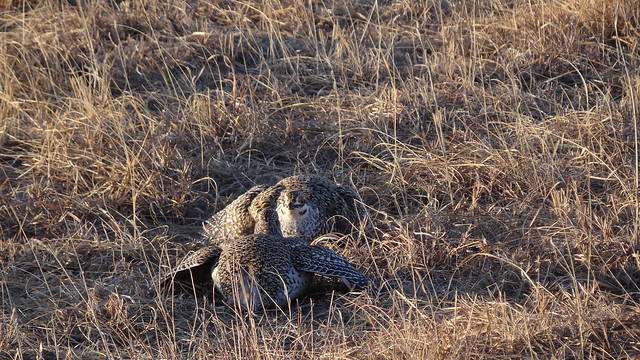 The birds can be a little lethargic this early in the season some years, but they were active, even frantic, the entire three hours we sat and watched.
The birds can be a little lethargic this early in the season some years, but they were active, even frantic, the entire three hours we sat and watched.
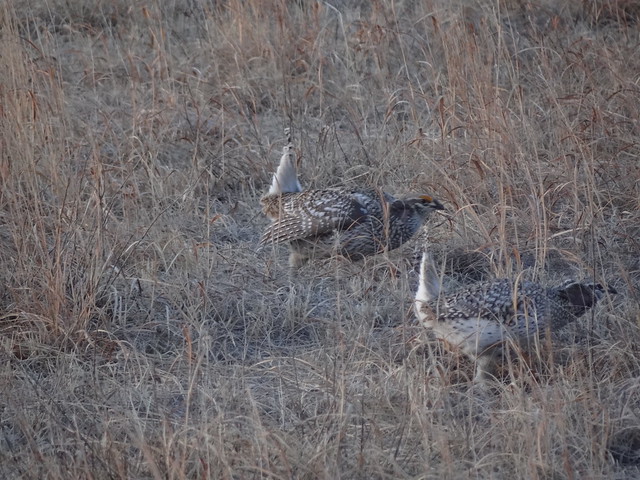 The show was absorbing, but we were still able to peel our eyes away to enjoy a distant Richardson’s merlin tearing her breakfast to bits on the ground below the next ridge.
The show was absorbing, but we were still able to peel our eyes away to enjoy a distant Richardson’s merlin tearing her breakfast to bits on the ground below the next ridge.
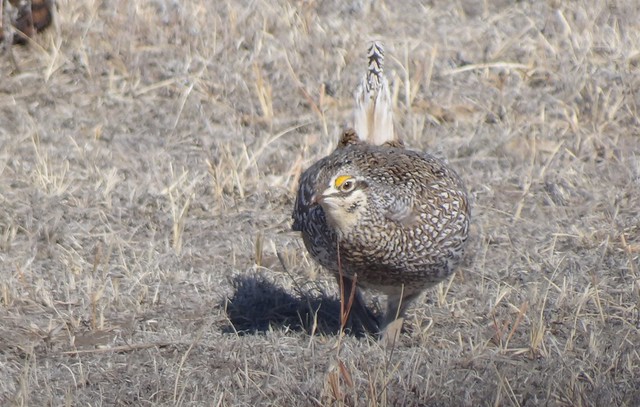 The birds took a break about 9:00, and we seized the opportunity to step back into the shuttle and ride to a well-deserved big breakfast in Mullen. And then, after a break at our motel, it was more birding for those who wanted to come along.
The birds took a break about 9:00, and we seized the opportunity to step back into the shuttle and ride to a well-deserved big breakfast in Mullen. And then, after a break at our motel, it was more birding for those who wanted to come along.
 There was still ice on some of the big Sandhills marshes to the west, but every patch of open water was nicely packed with waterfowl, especially common mergansers and redheads by the hundreds. Among the trumpeter swans already in command of their breeding marshes was the bird in the photo above, a male by behavior (and possibly by size), wearing a red neck collar that Jonathan’s photo showed to read “R27.” Eager to hear where and when this one was banded.
There was still ice on some of the big Sandhills marshes to the west, but every patch of open water was nicely packed with waterfowl, especially common mergansers and redheads by the hundreds. Among the trumpeter swans already in command of their breeding marshes was the bird in the photo above, a male by behavior (and possibly by size), wearing a red neck collar that Jonathan’s photo showed to read “R27.” Eager to hear where and when this one was banded.
The Hyannis cemeter has been a minor hot spot of sorts the past couple of years, and it came through again this time when a Townsend solitaire popped out of a red cedar as we got out of the van.
 As birds of this species are wont to do, it disappeared into the needles for a few minutes, but then re-appeared atop a gravestone to give everyone outstanding leisurely views — and me this lousy photo.
As birds of this species are wont to do, it disappeared into the needles for a few minutes, but then re-appeared atop a gravestone to give everyone outstanding leisurely views — and me this lousy photo.
The junco show was less satisfying. As we stood and waited, in vain, for the two or three we had flushed to come back out of the grass, though, another movement caught our eye on the ground beneath the trees.
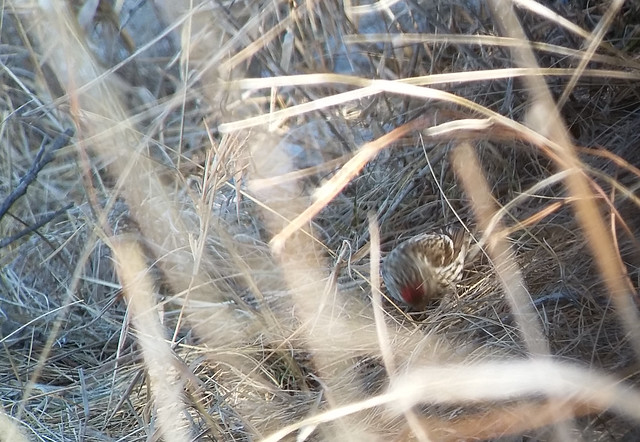 Common redpolls! I am almost never in Nebraska when they are, and it was a delight — I think for all of us — to watch this little band of seven feeding quietly just a few feet away. A great end to another bird-filled day.
Common redpolls! I am almost never in Nebraska when they are, and it was a delight — I think for all of us — to watch this little band of seven feeding quietly just a few feet away. A great end to another bird-filled day.


